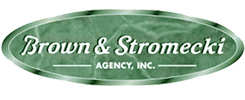Knowing what type of insurance you need if you live in a condominium can be confusing. After all, while you own your unit and everything inside its walls, you obviously are not required to insure the entire building, which you don’t own.
It’s important that you secure the proper insurance for your unit, to ensure that you are not underinsured in case you have to file a claim or over-insured and paying more premium than you need to.
To get it right, you’ll first have to look at the condominium association’s “declaration page,” which outlines what its master policy covers.
The cost of the master policy is shared by all unit owners, usually in the form of recurring condo or homeowners’ association fees. Here’s how to get your insurance right, so you can have peace of mind that any claims you file will be paid by your insurer.
Step 1: Review the condo association’s declaration document
This document details what real property each unit owner is responsible for insuring and what is insured under the association’s master policy.
An association’s master policy insures the condominium building, per its bylaws, in one of three ways:
All in. This policy covers all property collectively owned by the condo association or that is part of the condominium structure. It’s the most comprehensive condo master insurance policy, covering all condo improvements and additions.
Single entity. The condo association covers the common areas plus the units themselves. However, the association does not cover any building improvements performed by the unit owner; the unit owner is responsible for insuring those.
Bare walls. The association covers the building’s common areas, whereas the unit plus any improvements are the unit owner’s responsibility.
Step 2: Carefully navigate the coverage conundrum
After you review the association’s declaration page, you’ll want to obtain an accurate estimate of the replacement cost of the real property for which you are responsible (including any improvements you’ve made), and select this amount as the dwelling limit.
You will have a choice to make in terms what type of insurance policy you will need to secure to protect your condominium unit and your personal property:
- An HO-6 policy that is specifically for condo owners, or
- An HO-3 policy, which is the policy that most homeowners purchase.
The HO-6 policy is only appropriate if you have a condo association that has a master building policy that will cover the entire structure of your building, not just part of it.
These policies typically cover the following:
- Building property: The unit itself, including interior walls, floor, cabinetry, sinks, tiling and any other permanent fixture.
- Personal property: Furniture, electronics and other movable goods.
- Personal liability: Legal expenses from claims or lawsuits against you.
- Loss of use: Costs of lodging/transport if the unit becomes uninhabitable.
- Loss assessment:< Your portion of any losses shared out by the association.
Usually, the dwelling and property coverage for a condo will cover a defined list of “named perils” such as fire, hail, theft and vandalism. Any hazards that are not named are not covered, which means you’re financially responsible for those types of damage.
However, if your association doesn’t have a master building policy that will pay if your unit is destroyed, you will likely need to purchase an HO-3 policy, instead of an HO-6 policy. In fact, if you have a mortgage, the lender will likely require that you buy an HO-3 in these cases.
When both policies come into play
There may be damage that will require both the condo owner’s policy and the master policy to pay.
For example, a leaky roof — which would be covered by the association’s master policy — might also cause water damage to your unit below, which would then trigger your own policy. The same goes for a fire that damages the building itself as well as your unit and property in the unit.
The takeaway
As you can see, it’s important that you get your condo coverage right so you don’t have any coverage gaps. As well, if you have an HO-3 policy when your association has an all-in policy, you may be over-insured and overpaying for your coverage.
